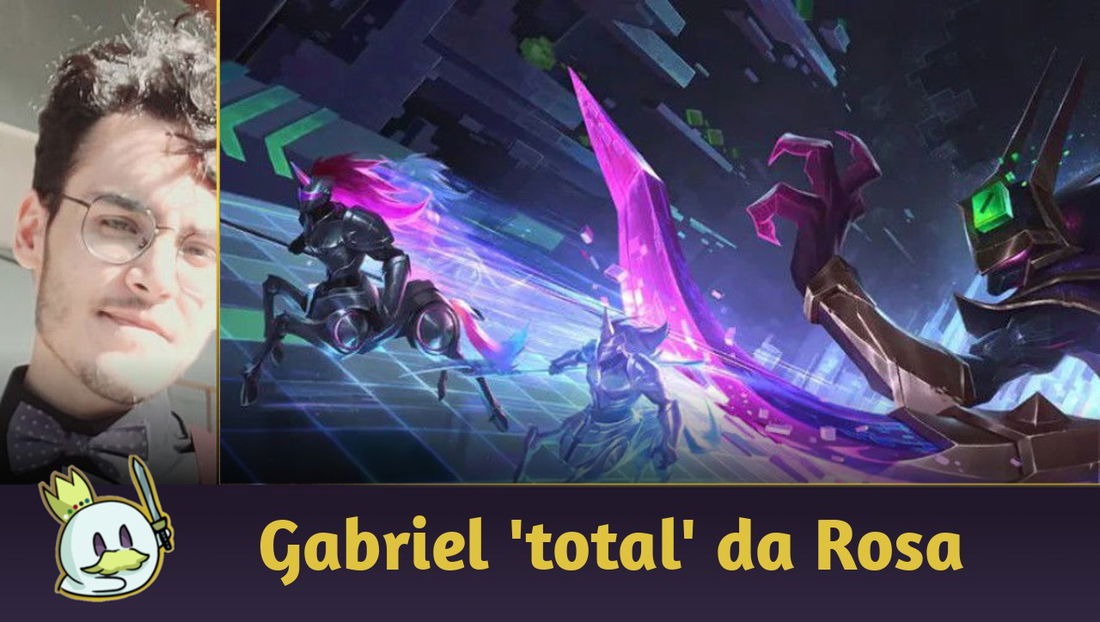Introduction
Today, we'll discuss one of the most powerful decks in the ranked queue, the mighty Taliyah Zilean, one of the few competitive combo lists this season.
This is one of the most popular decks right now, and its win rate could be better if it weren't so difficult to pilot. So, I decided to show you how to pilot this incredibly hard, but also incredibly strong, list.
Taliyah Zilean - The Heart of the Tree
This is a combo deck that focuses on healing and control spells to delay your opponent until you can get to The Heart of the Tree's 3rd chapter.
Because of the spells in this deck, which summon landmarks that already counted down, and Taliyah herself, you can play The Heart of the Tree several times. This way, you'll heal your Nexus, buff your units' stats globally, and finally create end game cards discounted by half multiple times.
The deck itself is difficult, as you'll create your own win condition randomly with The Heart of the Tree. If you can't pick the right card out of the three the landmark Manifests for you, you might lose a lot of time and end up losing the game.
This game style is relatively new, even though this deck's region combination is quite common (and hated by players). In the last Standard rotation, most combo cards rotated to Eternal, and, in the current Standard rotation, a few more of these spells also rotated.
Taliyah and Zilean is one of the few combo archetypes left in Standard. However, despite this, it is one of the strongest lists in the entire game right now.
Main Strategy
This list's main strategy is to survive and control your opponent until you can play The Heart of the Tree. After that, you also need to choose the right cards, which this landmark will Manifest for you, to win the match.

To survive the early game, Eye of the Dragon is the perfect unit. Activating your Story landmarks also activates Eye's Flow effect, so you don't necessarily have to play two spells per turn to get a Dragonling.
This makes this card incredibly efficient, as we no longer need to play multiple cheap spells in our decks to activate Flow consistently, like we used to do. However, you'll also have to rely a bit on your landmarks, and that's why we also play cards like Taliyah and Rite of Passage, the most powerful card in this list.

This spell wins games on the spot if you use it at the right time. Rite of Passage completely counters Explorers, which are quite popular in meta decks precisely to destroy landmarks.
Your opponent will have to spend around 4 mana to destroy your landmarks, but you can re-summon them for only 2 mana, at focus speed no less. This way, you get to activate a Story's effect without passing priority back to your opponent, and without paying for the landmark's full cost.
This deck also levels up Zilean quite easily. You'll often be able to use Zilean's exceptional level 2 effect, which gives you a copy of each card you played on the previous turn. With this effect, you'll replay your Story landmarks, or repeat any strong combos you played on the previous turn.

Empire Reconstructor is extremely important, as she Revives any destroyed landmarks. You can explore this in several ways with this deck.
For instance, you can summon two Taliyahs you Slept with a Blooming Bud with Reconstructor's effect. Or, you can summon multiple Time Bombs one after another, and draw multiple cards. Of course, you can also revive The Heart of the Tree, your main win condition.
Mulligan
This deck's mulligan is relatively simple: you can keep any 2-cost unit in your starting hand. You don't need to keep The Heart of the Tree in your starting hand every match. Against aggressive decks, having a 6-cost card, like the Heart, on turn 1 is often a bit too slow.
Against aggressive decks, your starting hand should look like the following:

Against control decks, or just slower decks, your starting hand should look like the following:

In mirror matches, your starting hand should look like the following:

Favorable Matchups
This archetype is great against Demacia or Freljord midrange lists, or any deck that plays big units without any protection.
You can stop attacks very easily, and also heal a lot.
Vex lists are good matchups only if they're the slower Vex lists, with the Erastin combo. The more aggressive versions, with Noxus or Piltover & Zaun, are bad matchups.
Bad Matchups
Every Ionia list is terrible against aggro decks that play too many units on the board very early on. So, any Tristana Teemo deck, aggro Vex list, and aggro archetypes in general, are bad matchups.
However, as this list also heals a lot, if you have a good staring hand (like the ones I recommended for your mulligan), you can win these matches - not everything is lost.
Against Lee Sin and other Ionia decks, it will be a bit harder. In these matches, both you and your opponent will have enough time to set up your combos, and whoever combos first wins - or, whoever stops the enemy combos first wins.
So, Portal Pioneer is a priority against Lee Sin, just like Quicksand and other removals. Save your removals for Lee and ignore other enemy units. Unfortunately, this strategy makes you very vulnerable to damage early on, but don't worry, as you'll heal yourself eventually.
Quick, But Very Important Tips
- You can also play this archetype as a Bomb Printer archetype, the iconic Zilean archetype that only deals damage through Time Bombs and wins with their burn. You'll rarely have to play this way, but it is something you can do if you don't see another alternative.
- Weight of Judgment is your nerfed Mystic Shot. You'll mainly use this spell to remove enemy units, but you can also use it to remove champions. The only difference is that Weight of Judgment deals less damage to champions.
- The Rootbound Path is an extremely powerful card, but also quite slow. Be careful if you're defending on evens, as sometimes it is not a good idea to play this card on curve.
- Use Blooming Bud with Portal Pioneer to remove enemy champions.
- Feel free to use Tag Out! to return an important card to your opponent's hand, even if it is 5 mana. This spell is rarely useful when you use it to return your own cards to your hand.
- Zilean is incredibly strong, but his level 2 is a bit complex. You'll often have too many cards in hand, and end up burning a few of them when your turn stats. So, feel free to block with Zilean and let him die, or just obliterate him by summoning another unit over him.
- Another trick you can use for Zilean is killing him when he's level 1 to keep shuffling more Time Bombs in your deck. So, overall, just don't get attached to your Zilean.
- This interaction might be a bug. It happens when you use Empire Reconstructor's effect on a Story landmark when it is in its last chapter, and I only ever saw it with The Heart of the Tree. After you use the landmark's last effect, of its last chapter, it will come back in its last chapter again, but it will look as if it is in its first chapter. For instance, let's assume you have a The Heart of the Tree, in its 3rd chapter. If you play Empire Reconstructor on it, and then activate its last effect right afterward, it will destroy itself, then revive, apparently in its first chapter. However, when you use its effect again, you'll activate its 3rd chapter effect, even though it is, visually, in its first chapter.
- Keep in mind that The Rootbound Path's discount effect only applies to the cards in your hand. Any card you draw or create won't be discounted.
- Also keep in mind that Taliyah copies story landmarks in their current chapters. So, in some games, it is best to not use The Heart of the Tree's healing effect so you can heal an extra 3 points next turn when you copy it with Taliyah.
Final Words

If you read this far, thank you! I hope you liked reading this article and that you had a lot of fun with it.
What about you? Do you like this deck? Would you change anything in it? Tell us all your thoughts in our comment section below.
Don't forget to share.
See you next time!















— commentaires 0
, Réactions 1
Soyez le premier à commenter